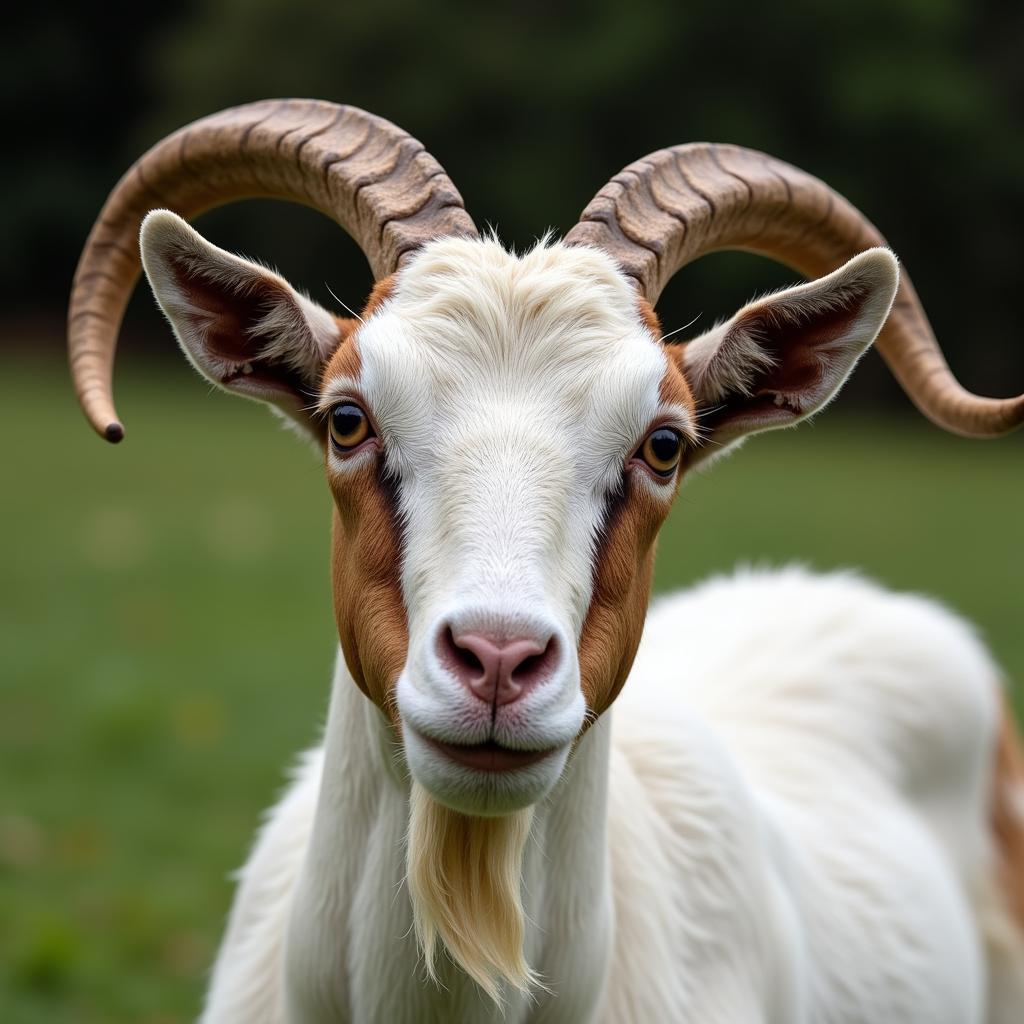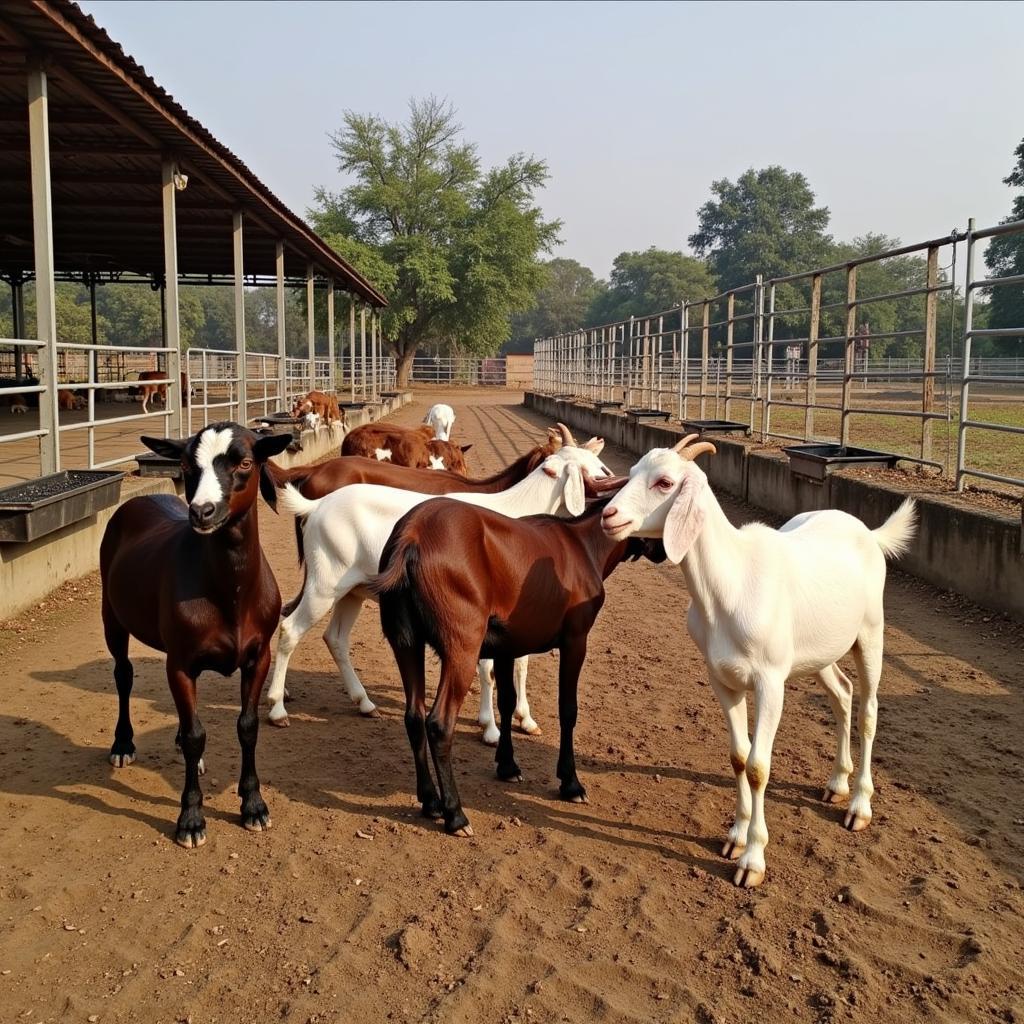African Boer Goat in Hindi: A Comprehensive Guide
The African Boer goat, known for its hardiness and meat production, has gained considerable interest among farmers in India. This comprehensive guide delves into the various aspects of raising African Boer goats in India, covering their origin, characteristics, breeding practices, and market potential.
Origin and History of the African Boer Goat
The African Boer goat, as its name suggests, originates from South Africa. The breed emerged in the early 20th century from selective breeding of indigenous goat populations by Dutch farmers, known as “Boers.” The goal was to develop a goat breed specifically for meat production, capable of thriving in the harsh African climate.
Characteristics of the African Boer Goat
 Distinctive Features of the Boer Goat
Distinctive Features of the Boer Goat
African Boer goats are easily recognizable by their distinctive features. They typically have a white body with a brown head, although variations in coloration can occur. They are a relatively large breed with a muscular build, and both males and females typically possess horns.
Here are some key characteristics of the African Boer goat:
- High growth rate: Boer goats are known for their rapid growth, reaching maturity faster than many other goat breeds.
- Excellent meat quality: They produce lean meat with a mild, flavorful taste, making them highly sought after in the market.
- Adaptability: They can adapt to a wide range of climates, including the tropical and subtropical conditions prevalent in India.
- Good mothers: Boer goats are known for their strong maternal instincts and high milk production, ensuring the healthy growth of their kids.
Breeding African Boer Goats in India
 Boer Goat Farming in India
Boer Goat Farming in India
The introduction of African Boer goats to India has opened up new opportunities for goat farmers. The breed’s superior meat production and adaptability make them a potentially profitable option.
Here are some key considerations for breeding African Boer goats in India:
- Climate and Housing: While Boer goats are adaptable, providing them with adequate shelter from extreme weather is crucial, especially during the hot summer months and the monsoon season.
- Feeding and Nutrition: A balanced diet consisting of high-quality fodder, grains, and mineral supplements is essential for their growth and meat production.
- Breeding Management: Controlled breeding practices, including proper selection of breeding stock and timely kidding, are crucial for maximizing productivity.
Market Potential of African Boer Goat Meat in India
The demand for goat meat in India is substantial, driven by cultural preferences and religious practices. African Boer goats, with their superior meat quality and yield, have the potential to cater to this demand effectively.
- Growing Middle Class: The rising middle class in India is increasingly seeking healthier and leaner meat options, which Boer goat meat can provide.
- Religious Festivals: Goat meat is an integral part of several religious festivals in India, creating a consistent demand throughout the year.
- Export Potential: India also has the potential to export Boer goat meat to other countries with a high demand for goat meat, further boosting the market for Indian farmers.
Conclusion
The African Boer goat presents a compelling opportunity for goat farmers in India. By adopting suitable breeding practices and capitalizing on the increasing demand for goat meat, farmers can potentially reap significant economic benefits. The breed’s hardiness, adaptability, and superior meat quality make it a valuable addition to the Indian livestock sector.

